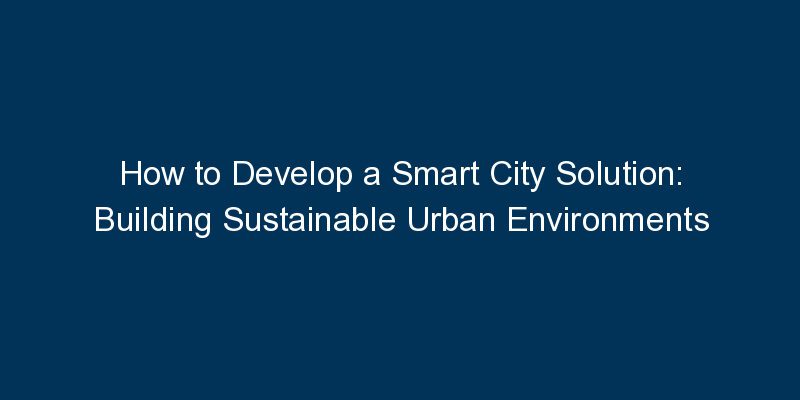Smart city solutions leverage technology to enhance urban living, sustainability, and efficiency. This blog provides a comprehensive guide on how to develop a smart city solution, empowering city planners and developers to create innovative and sustainable urban environments.
Introduction:
The concept of smart cities revolves around integrating technology to improve various aspects of urban life, including infrastructure, transportation, energy, and public services. This guide explores the key steps involved in developing a smart city solution, fostering sustainability and efficiency.
Key Steps to Develop a Smart City Solution:
- Identify City Challenges and Objectives: Conduct a thorough analysis of the city’s challenges and objectives. Whether it’s traffic congestion, energy consumption, or public safety, understanding the specific needs is crucial for smart city development.
- Build a Robust IT Infrastructure: Establish a robust information technology (IT) infrastructure to support smart city solutions. This includes connectivity, data centers, and communication networks that form the backbone of smart city initiatives.
- IoT Sensor Deployment: Deploy IoT (Internet of Things) sensors strategically across the city. These sensors collect real-time data on various parameters such as air quality, traffic flow, waste management, and more.
- Data Analytics and Integration: Implement data analytics tools to process and derive insights from the vast amount of data generated by IoT sensors. Integrate data from different sources to create a holistic view for decision-makers.
- Smart Grids and Energy Management: Integrate smart grids and energy management systems to optimize energy consumption and promote sustainability. This may involve deploying renewable energy sources and smart meters.
- Citizen Engagement and Feedback: Develop platforms for citizen engagement and feedback. Utilize mobile apps and online portals to enable residents to participate in the smart city initiatives, report issues, and stay informed.
Conclusion:
Developing a smart city solution requires a holistic approach that addresses urban challenges and embraces technology for sustainable development. By following the steps outlined in this guide, city planners and developers can contribute to building smart, resilient, and efficient urban environments.






















Comments